Maintaining Healthy Soil in Your Garden
Maintaining healthy soil in your garden isn't just a chore; it's an art form that can transform your gardening experience into something truly magical. Imagine your garden as a living, breathing entity, where every seed you plant has the potential to flourish. Healthy soil acts as the heart of this ecosystem, providing the necessary nutrients and structure that plants need to thrive. But what exactly does it take to keep your soil in tip-top shape? In this article, we’ll explore essential practices that will not only ensure optimal plant growth but also contribute to the sustainability of your gardening efforts. Get ready to dig deep and discover techniques, benefits, and tips that will help you nurture your soil effectively!
Why is healthy soil so crucial, you ask? Well, think of it as the foundation of a house. Without a solid base, everything built upon it is at risk of crumbling. Healthy soil provides essential nutrients, supports plant roots, and promotes biodiversity, ultimately leading to healthier plants and a more productive garden ecosystem. When your soil is rich in organic matter and teeming with life, it becomes a powerhouse that can support a variety of plants, insects, and microorganisms. This biodiversity not only enhances the aesthetic of your garden but also creates a balanced environment that can naturally fend off pests and diseases.
Understanding soil composition and structure is like learning the secret recipe to your favorite dish. It’s crucial for effective gardening! Soil is made up of several components, including minerals, organic matter, and microorganisms. These elements work together in a delicate balance that influences plant health. For instance, minerals such as sand, silt, and clay create the soil's texture, while organic matter enriches it with nutrients. Microorganisms, on the other hand, play a vital role in breaking down organic materials and making nutrients available to plants. Without a solid grasp of these components, you might find yourself struggling to grow the vibrant garden you envision.
Minerals are the unsung heroes of soil health, providing essential nutrients that plants need to grow strong and vibrant. They’re like the vitamins and minerals in our diet that keep us healthy! Key minerals include nitrogen, phosphorus, and potassium—often referred to as NPK. Each of these plays a distinct role:
- Nitrogen: Essential for leaf growth and overall plant health.
- Phosphorus: Crucial for root development and flower production.
- Potassium: Helps in water regulation and disease resistance.
Understanding these minerals and ensuring they are present in the right amounts can make a significant difference in your garden's success.
Plants require a variety of nutrients for optimal growth, and healthy soil is their primary source. These nutrients can be divided into two categories: macronutrients and micronutrients. Macronutrients, such as nitrogen, phosphorus, and potassium, are needed in larger quantities, while micronutrients like iron, manganese, and zinc are required in smaller amounts but are equally important. The right balance of these nutrients ensures robust plant development and can lead to a bountiful harvest. Regular soil testing can help you monitor nutrient levels and make necessary adjustments.
Now, let’s talk about the tiny warriors of your garden—microorganisms! These microscopic beings may be small, but they are mighty when it comes to maintaining soil health. They break down organic matter, recycle nutrients, and improve soil structure. Think of them as nature’s recyclers, turning waste into nourishment for your plants. A healthy population of microorganisms can also help suppress diseases, making your garden more resilient. So, how do you encourage these beneficial organisms? By adding organic matter, such as compost, and avoiding chemical fertilizers that can disrupt their habitat.
Adding organic matter to your soil is like giving it a nutrient-rich meal. It improves soil structure, enhances fertility, and increases moisture retention. One of the best ways to enrich your soil is through composting. Composting not only reduces waste but also creates a rich, dark material that can be mixed into your soil. This practice not only boosts soil health but also creates a sustainable cycle that benefits both you and the environment. Imagine turning kitchen scraps and yard waste into a goldmine for your garden!
Regular soil testing is essential for understanding nutrient levels and pH balance. It’s like a health check-up for your garden! By testing your soil, you can identify deficiencies and make informed decisions about amendments. Adjusting your soil’s pH can significantly impact nutrient availability and plant growth. For example, most plants thrive in slightly acidic to neutral soil (pH 6.0 to 7.0). If your soil is too acidic, you might need to add lime, while sulfur can help lower pH levels if your soil is too alkaline. Knowing how to conduct soil tests and interpret the results can empower you to create the ideal growing conditions for your plants.
Soil pH is a critical factor that affects nutrient availability and overall plant health. A simple pH test can reveal whether your soil is acidic, neutral, or alkaline. Understanding this is vital because different plants have varying pH requirements. For instance, blueberries prefer acidic soil, while asparagus thrives in alkaline conditions. Adjusting soil pH can be as straightforward as adding amendments like lime or sulfur, but it’s essential to do so gradually and monitor the changes.
There are various amendments that can improve soil health. Some common ones include:
- Lime: Raises soil pH and adds calcium.
- Sulfur: Lowers soil pH and adds sulfur.
- Organic fertilizers: Provide nutrients without chemical additives.
Incorporating these amendments can enhance soil quality and create a thriving environment for your plants.
Effective water management is crucial for maintaining healthy soil. Overwatering can lead to soil compaction and nutrient leaching, while underwatering can stress plants. Finding the right balance is key! Understanding the relationship between water, soil structure, and plant health can help you develop efficient irrigation practices. For instance, using mulch can help retain moisture and reduce evaporation, while drip irrigation can deliver water directly to plant roots.
Drip irrigation is like a refreshing drink for your plants, providing them with the moisture they need without drowning their roots. This method conserves water and improves soil moisture levels by delivering water directly to the root zone. Not only does this reduce water waste, but it also minimizes the risk of fungal diseases that can arise from wet foliage. Implementing drip irrigation can lead to healthier plants and a more sustainable garden.
Mulching is an effective way to retain soil moisture and suppress weeds. Think of it as a cozy blanket for your garden! Various mulching techniques, such as using straw, wood chips, or shredded leaves, can improve soil health and garden productivity. Mulch not only helps regulate soil temperature but also adds organic matter as it breaks down over time, enriching the soil further. Plus, it saves you time and effort in weeding!
Q: How often should I test my soil?
A: It's recommended to test your soil at least once a year or every growing season to keep track of nutrient levels and pH balance.
Q: Can I use kitchen scraps for composting?
A: Absolutely! Kitchen scraps like vegetable peels, coffee grounds, and eggshells are excellent for composting.
Q: What’s the best way to improve soil drainage?
A: Adding organic matter, such as compost, can improve soil structure and drainage. You can also consider raised beds for better water management.
Q: How do I know if my soil is too acidic?
A: Conduct a soil pH test. If your pH is below 6.0, your soil is considered acidic, and you may need to add lime.
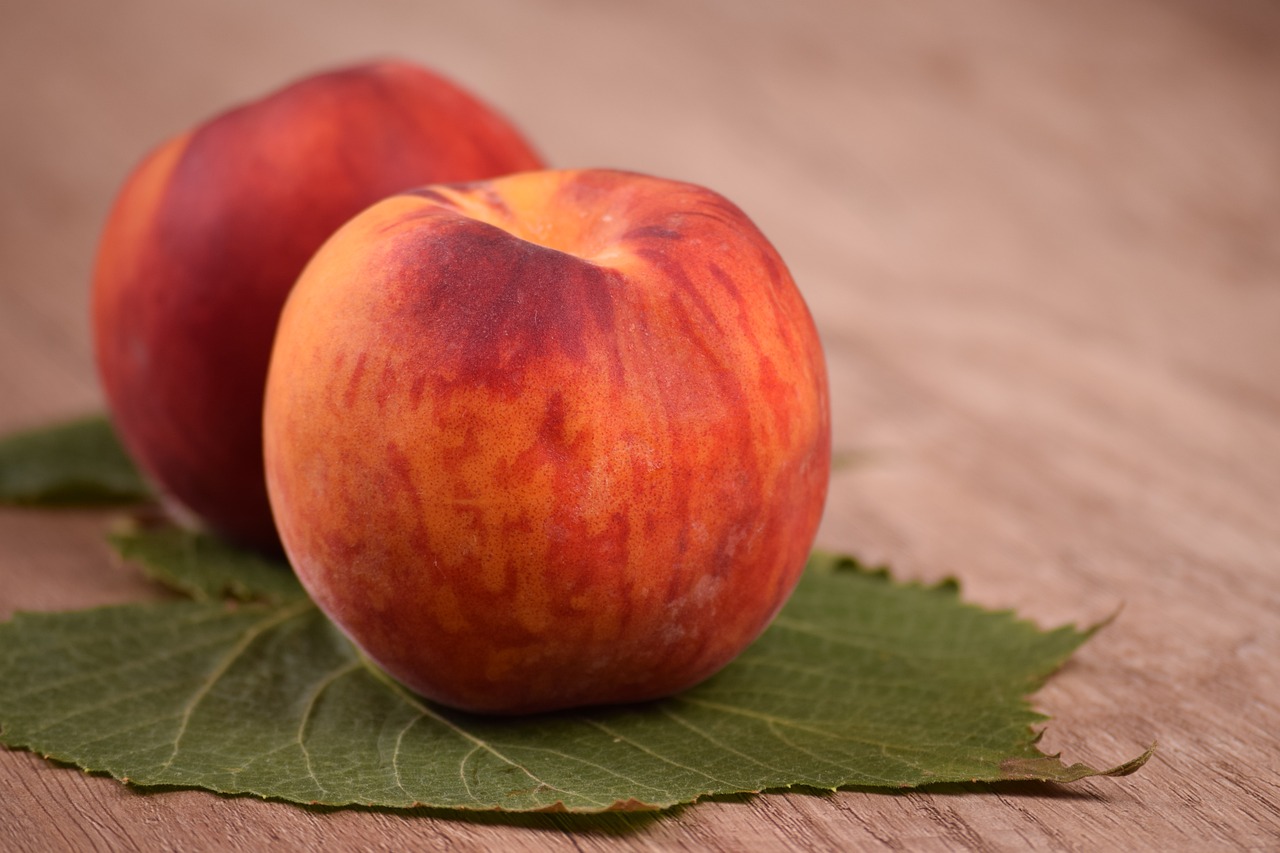
The Importance of Healthy Soil
This article explores essential practices for maintaining healthy soil in your garden, ensuring optimal plant growth and sustainability. Discover techniques, benefits, and tips for nurturing your soil effectively.
Have you ever stopped to think about what makes your garden thrive? The secret lies in the soil, the unsung hero of your garden ecosystem. Healthy soil is more than just dirt; it's a living, breathing entity that serves as the foundation for all plant life. Without it, your plants would struggle to grow, and your garden would lack vibrancy. Healthy soil provides essential nutrients, supports plant roots, and promotes biodiversity, leading to healthier plants and a more productive garden.
When we talk about healthy soil, we're referring to a complex web of microorganisms, minerals, and organic matter that work together to create a fertile environment. Think of it as a bustling city where each component plays a vital role in the overall health of the community. Just like a city needs its roads, buildings, and people to function, your garden needs healthy soil to thrive. Here are some key reasons why maintaining healthy soil is crucial:
- Nutrient Supply: Healthy soil is rich in essential nutrients that plants need to grow strong and produce fruit. Nutrients like nitrogen, phosphorus, and potassium are vital for plant health.
- Water Retention: Good soil structure helps retain moisture, ensuring that your plants have access to water even during dry spells. This is particularly important for sustainable gardening.
- Soil Structure: Healthy soil has a crumbly texture that allows for proper air circulation and root penetration. This structure is vital for root development and overall plant health.
- Biodiversity: A healthy soil ecosystem supports a diverse range of organisms, from earthworms to beneficial bacteria, which contribute to nutrient cycling and pest control.
In essence, healthy soil is the backbone of a successful garden. It not only supports plant growth but also fosters a rich ecosystem that can regulate itself. Just like you wouldn't build a house on a shaky foundation, you shouldn't plant your garden in unhealthy soil. Investing time and effort into nurturing your soil will pay off in the long run, leading to a more vibrant and productive garden.
Understanding soil composition and structure is crucial for effective gardening. This section discusses the various components of soil, including minerals, organic matter, and microorganisms, and how they influence plant health.
Minerals play a vital role in soil health, providing essential nutrients for plant growth. This subsection examines the key minerals and their functions in supporting vibrant garden ecosystems.
Plants require specific nutrients for optimal growth. This section outlines the essential nutrients found in healthy soil and their significance in promoting robust plant development.
Microorganisms contribute to soil health by breaking down organic matter and enhancing nutrient availability. This section highlights the importance of these tiny organisms in maintaining a balanced soil ecosystem.
Adding organic matter to soil improves its structure and fertility. This subsection discusses the benefits of composting and how it enriches soil health while reducing waste.
Regular soil testing is essential for understanding nutrient levels and pH balance. This section covers how to conduct soil tests and the importance of amendments to enhance soil quality.
Soil pH affects nutrient availability and plant growth. This subsection explains how to measure soil pH and adjust it for optimal gardening conditions.
Various amendments can improve soil health. This section discusses common soil amendments, including lime, sulfur, and organic fertilizers, and their roles in enhancing soil quality.
Effective water management is crucial for maintaining healthy soil. This section explores the relationship between water, soil structure, and plant health, along with tips for efficient irrigation practices.
Drip irrigation offers numerous benefits for soil health by delivering water directly to plant roots. This subsection details how this method conserves water and improves soil moisture levels.
Mulching is an effective way to retain soil moisture and suppress weeds. This section discusses various mulching techniques and their positive impact on soil health and garden productivity.
Q: How often should I test my soil?
A: It's recommended to test your soil at least once a year, especially before planting season, to ensure optimal nutrient levels and pH balance.
Q: What can I do if my soil is too acidic?
A: You can add lime to raise the pH level of your soil, making it less acidic and more suitable for most plants.
Q: How can I improve compacted soil?
A: Incorporating organic matter, such as compost, and practicing no-till gardening can help improve soil structure and reduce compaction.
Q: Is it necessary to use chemical fertilizers?
A: While chemical fertilizers can provide quick nutrients, organic alternatives like compost and natural fertilizers can enhance soil health without the risks associated with chemicals.
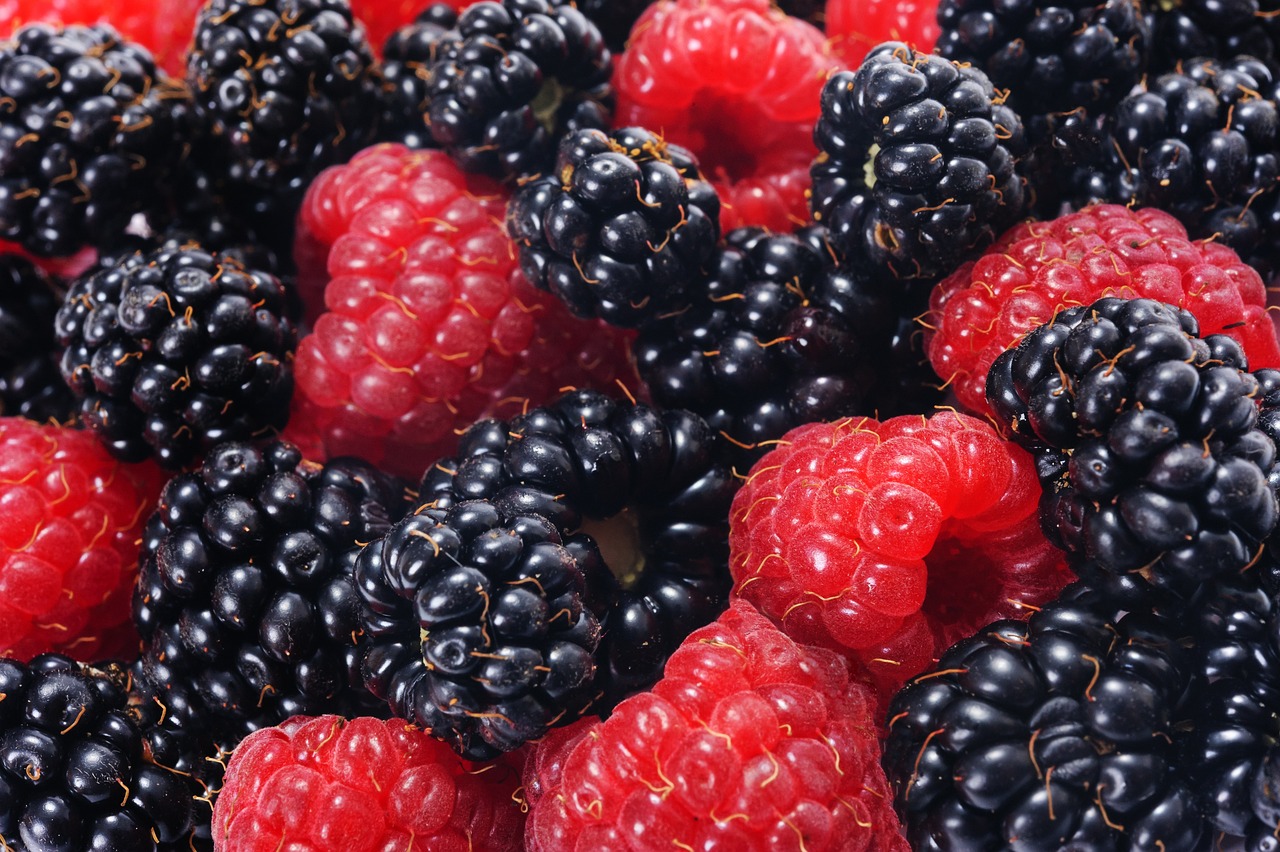
Soil Composition and Structure
Understanding the composition and structure of soil is like deciphering the secret language of your garden. Just as a chef needs the right ingredients to create a delectable dish, plants require specific soil components to thrive. Soil is not just dirt; it’s a complex ecosystem made up of various elements that work together to support plant life. When you dig into the earth, you’re uncovering a world full of minerals, organic matter, and microorganisms that play crucial roles in the health of your garden.
At its core, soil is composed of three main components: minerals, organic matter, and air and water. Each of these elements contributes to the overall health and functionality of the soil. Let’s break it down:
| Component | Description | Importance |
|---|---|---|
| Minerals | Inorganic particles derived from the weathering of rocks. | Provide essential nutrients for plant growth. |
| Organic Matter | Decomposed plant and animal materials. | Enhances soil structure, fertility, and moisture retention. |
| Air and Water | Spaces between soil particles filled with air and water. | Essential for root respiration and nutrient absorption. |
Now, let’s dive deeper into the role of each component. Minerals are the building blocks of soil. They include sand, silt, and clay, each providing unique properties that affect drainage, nutrient retention, and soil texture. For instance, sandy soils drain quickly but may not hold nutrients well, while clay soils retain moisture but can become compacted, making it hard for roots to grow.
On the other hand, organic matter is the life force of your soil. It’s like the secret sauce that makes everything better! When you add compost or decomposed leaves to your garden, you’re enriching the soil with nutrients and improving its structure. This organic material enhances the soil’s ability to retain moisture and provides a habitat for beneficial microorganisms.
Speaking of microorganisms, they are the unsung heroes of soil health. These tiny organisms, including bacteria, fungi, and protozoa, play a pivotal role in breaking down organic matter, releasing nutrients, and promoting a balanced ecosystem. Without them, your soil would be lifeless and unable to support healthy plant growth. It's fascinating to think that a handful of healthy soil can contain billions of these microorganisms, all working tirelessly to sustain your garden.
In summary, the composition and structure of soil are fundamental to creating a thriving garden. By understanding the roles of minerals, organic matter, and microorganisms, you can take proactive steps to nurture your soil. Remember, healthy soil leads to healthy plants, and a vibrant garden is a reflection of the care you put into its foundation.
- What is the best type of soil for gardening? The best type of soil is loamy soil, which is a balanced mixture of sand, silt, and clay, rich in organic matter.
- How can I improve my soil quality? You can improve soil quality by adding organic matter such as compost, performing regular soil tests, and using appropriate soil amendments.
- What role do earthworms play in soil health? Earthworms aerate the soil, improve drainage, and contribute to nutrient cycling, making them vital for healthy soil.

Minerals in Soil
When we think about soil, we often picture a simple mix of dirt and sand. However, the reality is that soil is a complex ecosystem, teeming with life and nutrients. One of the most critical aspects of this ecosystem is the presence of minerals. These minerals serve as the building blocks for healthy soil and, by extension, healthy plants. Think of soil minerals as the vitamins and minerals in our diet; just as we need a variety of nutrients to thrive, plants require a specific set of minerals to grow strong and vibrant.
Minerals in soil can be categorized into two main types: macronutrients and micronutrients. Macronutrients are the nutrients that plants need in larger quantities, while micronutrients are required in smaller amounts but are equally important. Here’s a quick breakdown of these essential minerals:
| Type | Minerals | Function |
|---|---|---|
| Macronutrients | Nitrogen (N), Phosphorus (P), Potassium (K) | Essential for growth, flowering, and fruiting. |
| Micronutrients | Iron (Fe), Manganese (Mn), Zinc (Zn), Copper (Cu) | Support various physiological functions in plants. |
Nitrogen, for instance, is crucial for the development of leaves and stems, while phosphorus plays a vital role in root development and flowering. Potassium helps regulate various processes, including water retention and disease resistance. On the other hand, micronutrients, although needed in smaller amounts, are indispensable for processes such as photosynthesis and enzyme function.
Understanding the role of these minerals allows gardeners to tailor their soil management practices effectively. For instance, if you notice your plants are struggling to grow or their leaves are turning yellow, it might be a sign of nutrient deficiency. By conducting a soil test, you can determine which minerals are lacking and adjust your soil amendments accordingly.
Moreover, the **availability** of these minerals can be influenced by soil pH and organic matter content. For example, certain minerals become less available to plants in acidic soils. Therefore, managing your soil's pH and ensuring it has adequate organic matter can significantly enhance mineral availability, leading to healthier plants and a more productive garden.
In conclusion, minerals are not just an afterthought in gardening; they are fundamental to creating a thriving ecosystem. By understanding the types of minerals your soil contains and their functions, you can make informed decisions that will promote plant health and enhance the overall productivity of your garden.
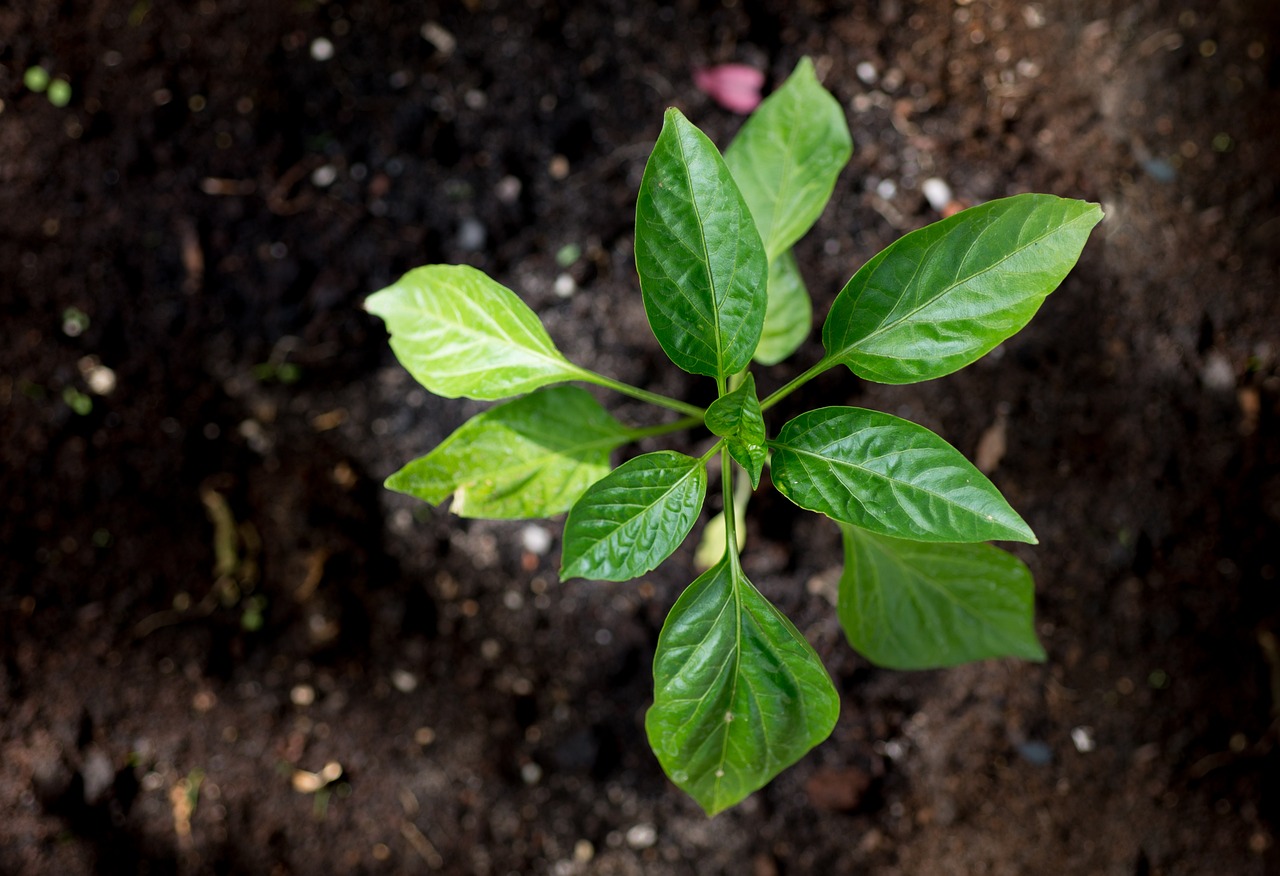
Essential Nutrients
When it comes to gardening, understanding is like knowing the secret ingredients in a family recipe. Just as a chef carefully selects the right spices to elevate a dish, plants rely on specific nutrients to thrive and flourish. These nutrients are the building blocks of plant health, influencing everything from growth to flowering and fruiting. Let's dive deeper into the world of essential nutrients and see how they contribute to a vibrant garden ecosystem.
At the heart of healthy soil are three primary macronutrients: nitrogen (N), phosphorus (P), and potassium (K). These nutrients are often referred to as NPK and are crucial for various plant functions:
| Nutrient | Function | Deficiency Symptoms |
|---|---|---|
| Nitrogen (N) | Promotes leafy growth and vibrant green color | Yellowing leaves, stunted growth |
| Phosphorus (P) | Supports root development and flowering | Purple or dark green leaves, poor flowering |
| Potassium (K) | Enhances overall plant health and disease resistance | Wilting, browning leaf edges |
In addition to these macronutrients, plants also require a variety of micronutrients, albeit in smaller quantities. These include iron, manganese, zinc, and copper, among others. While they may be needed in lesser amounts, their roles are just as vital. For example, iron is essential for chlorophyll production, which is crucial for photosynthesis. A deficiency in these micronutrients can lead to poor plant health and reduced yields.
One of the best ways to ensure your garden soil is rich in these essential nutrients is through regular soil testing. This process allows you to determine the nutrient levels present in your soil and identify any deficiencies. Armed with this information, you can make informed decisions about amendments and fertilizers to enhance soil quality. Remember, healthy soil is not just about adding nutrients; it's also about maintaining a balanced ecosystem where plants can thrive.
Moreover, incorporating organic matter into your garden can significantly improve nutrient availability. Compost, well-rotted manure, and cover crops can enrich your soil, providing a slow release of nutrients while also enhancing soil structure. This is akin to creating a nutrient buffet for your plants, ensuring they have access to everything they need for robust growth.
In conclusion, understanding and providing essential nutrients is fundamental to maintaining a healthy garden. By focusing on both macronutrients and micronutrients, conducting regular soil tests, and enriching your soil with organic matter, you can create an environment where your plants not only survive but thrive. So, the next time you dig into your garden, remember that you're not just planting seeds; you're nurturing a vibrant ecosystem that relies on the right balance of nutrients!
- What are the signs of nutrient deficiency in plants? Look for yellowing leaves, stunted growth, and poor flowering as common indicators.
- How often should I test my soil? It's a good practice to test your soil at least once a year, especially before planting.
- Can I use chemical fertilizers instead of organic amendments? While chemical fertilizers can provide quick results, organic amendments improve long-term soil health and structure.
- What is the best way to add organic matter to my soil? Composting kitchen scraps and yard waste is an excellent way to enrich your soil organically.
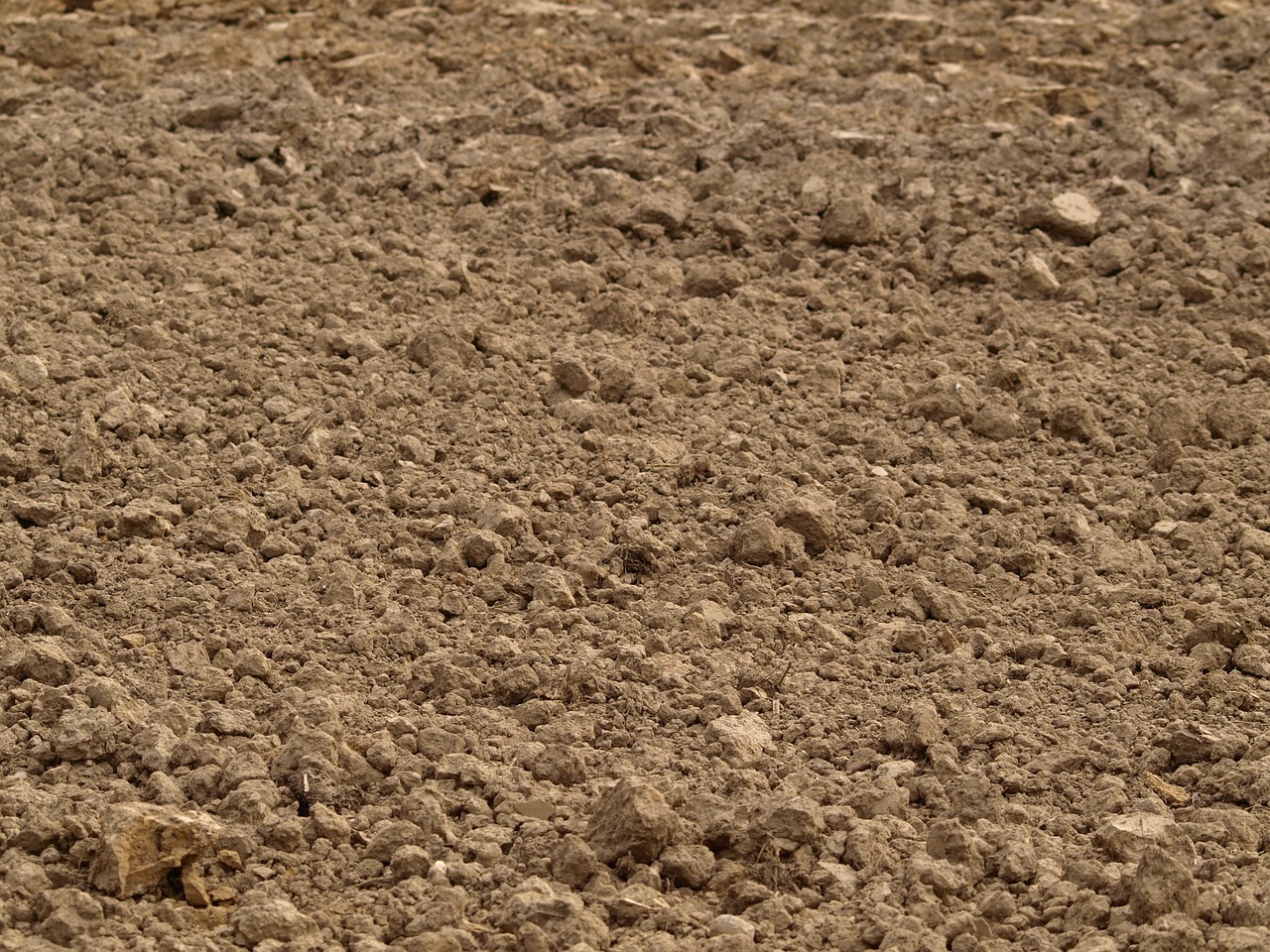
Microorganisms and Soil Health
When we think about soil, we often picture dirt, rocks, and maybe a few worms. But did you know that the real magic happens at a microscopic level? Microorganisms, those tiny living beings, play a crucial role in maintaining soil health and, consequently, the health of your garden. These microscopic heroes include bacteria, fungi, protozoa, and nematodes, each contributing to a vibrant ecosystem that supports plant life.
Let's dive deeper into their functions. Microorganisms are primarily responsible for decomposing organic matter, transforming it into essential nutrients that plants can absorb. Imagine them as nature's recyclers, breaking down leaves, roots, and other organic materials into a rich, nutrient-dense compost. This process not only enriches the soil but also improves its structure, making it more aerated and capable of retaining moisture.
Furthermore, some microorganisms form symbiotic relationships with plant roots. For example, mycorrhizal fungi attach themselves to plant roots, enhancing their ability to absorb water and nutrients. In return, the plant provides the fungi with carbohydrates produced through photosynthesis. This partnership is a classic example of mutualism, where both parties benefit. In fact, plants with mycorrhizal associations often exhibit increased growth and resilience to environmental stressors.
Another fascinating aspect of microorganisms is their role in nutrient cycling. They help convert nitrogen from the atmosphere into forms that plants can use, a process known as nitrogen fixation. This is especially important because nitrogen is a vital nutrient for plant growth. Without these microorganisms, our gardens would struggle to thrive, as nitrogen is often a limiting factor in soil health.
To illustrate the importance of microorganisms, consider the following table that highlights some key types and their functions:
| Microorganism Type | Function |
|---|---|
| Bacteria | Decompose organic matter and fix nitrogen |
| Fungi | Break down complex organic materials and form mycorrhizal associations |
| Protozoa | Control bacterial populations and release nutrients |
| Nematodes | Regulate microbial populations and enhance nutrient cycling |
In conclusion, nurturing a healthy population of microorganisms in your garden soil is essential for creating a balanced ecosystem that promotes plant health. By incorporating practices such as composting and minimizing chemical fertilizers, you can support these tiny but powerful allies. Remember, healthy soil is alive, teeming with life, and the more diverse the microbial community, the more resilient your garden will be.
- What are the signs of unhealthy soil? Unhealthy soil may exhibit poor drainage, lack of plant growth, and an unpleasant odor.
- How can I promote beneficial microorganisms in my garden? You can promote beneficial microorganisms by adding organic matter, reducing chemical usage, and practicing crop rotation.
- Is it necessary to test my soil for microorganisms? While not essential, soil testing can provide valuable insights into microbial health and overall soil quality.
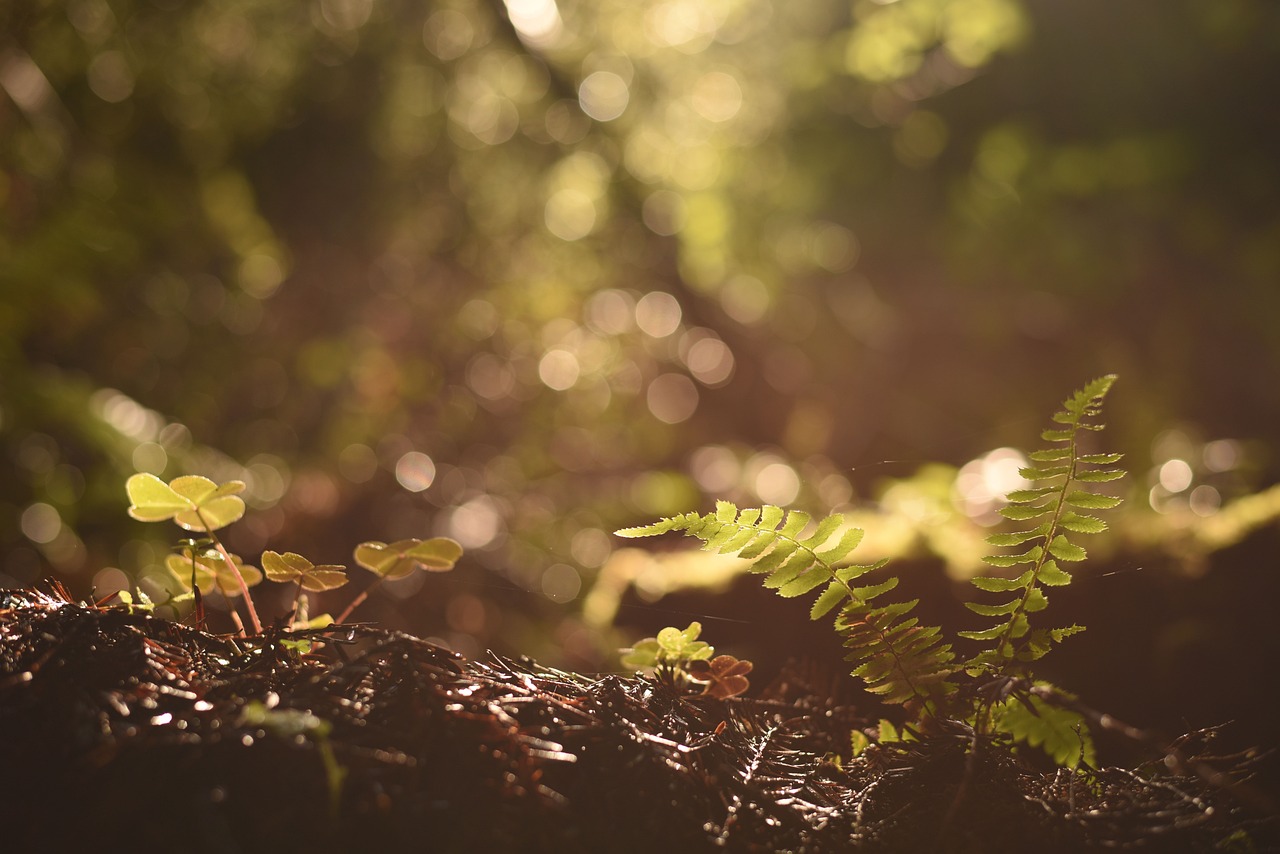
Organic Matter and Composting
When it comes to nurturing your garden, organic matter is like the secret sauce that makes everything better. It’s not just about what you see on the surface; the magic happens beneath your feet. Organic matter, which includes decomposed leaves, grass clippings, food scraps, and other natural materials, enriches the soil, improves its structure, and enhances its ability to retain moisture. Think of it as a buffet for your soil's microorganisms, providing them with the nutrients they need to thrive and support your plants.
Composting is one of the best ways to add organic matter to your garden. It's like recycling for your kitchen scraps and yard waste! By composting, you not only reduce waste but also create a nutrient-rich amendment that can transform your garden into a lush paradise. The process involves collecting organic materials and allowing them to decompose over time, resulting in a dark, crumbly substance known as compost. This compost is packed with nutrients and beneficial microorganisms that can significantly boost soil health.
So, how do you get started with composting? It’s easier than you might think! Here’s a simple breakdown of the process:
- Gather Your Materials: Start by collecting a mix of green materials (like fruit and vegetable scraps, grass clippings, and coffee grounds) and brown materials (such as dried leaves, cardboard, and straw). A good rule of thumb is to aim for a ratio of about 2:1 brown to green materials.
- Create Your Pile: Choose a spot in your yard for your compost pile or bin. Layer your materials, starting with coarse brown materials at the bottom to help with aeration.
- Maintain Your Compost: Turn your pile every few weeks to aerate it and speed up the decomposition process. Keep it moist but not soggy—think of a damp sponge!
- Harvest Your Compost: After a few months, your compost should be ready. It will appear dark, crumbly, and earthy-smelling. Mix it into your garden beds or use it as a top dressing for your plants.
The benefits of adding organic matter through composting are immense. Not only does it improve soil fertility, but it also enhances soil structure, allowing for better air and water movement. This is particularly important for root development. As a result, your plants will be healthier, more resilient, and better able to withstand pests and diseases. Plus, organic matter helps to suppress weeds and reduces the need for chemical fertilizers, making your gardening efforts more sustainable.
In summary, incorporating organic matter into your soil through composting is a win-win situation. You’re not just feeding your plants; you’re also fostering a vibrant ecosystem in your garden. Remember, healthy soil leads to healthy plants, and composting is one of the simplest yet most effective ways to achieve that!
Q: What materials can I compost?
A: You can compost a variety of organic materials, including fruit and vegetable scraps, coffee grounds, eggshells, grass clippings, dried leaves, and small branches. Avoid meat, dairy, and oily foods as they can attract pests.
Q: How long does it take for compost to be ready?
A: Compost can take anywhere from a few weeks to several months to fully decompose, depending on factors like temperature, moisture, and the materials used. Regularly turning the pile can speed up the process.
Q: Can I compost in an apartment?
A: Absolutely! You can use a small compost bin or a worm bin (vermicomposting) to compost kitchen scraps in an apartment. Just ensure you manage moisture and odors effectively.

Soil Testing and Amendments
Regular soil testing is essential for understanding the nutrient levels and pH balance in your garden. Think of it as a health check-up for your soil. Just like we need to know our vitamins and minerals to stay fit, plants thrive when they have the right mix of nutrients in the soil. But how do you know what your soil needs? First, you’ll want to collect samples from different areas of your garden, as soil can vary significantly from one spot to another. This will give you a comprehensive overview of your soil's health.
Once you have your samples, you can send them to a local extension service or a lab for analysis. The results will typically include information on key nutrients such as nitrogen, phosphorus, and potassium, along with the soil's pH level. Understanding these results can help you make informed decisions about amendments that will enhance your soil quality. For instance, if your soil is lacking in nitrogen, you might consider adding organic fertilizers or compost that are rich in this essential nutrient.
Speaking of amendments, let’s take a closer look at some common options that can significantly improve your soil health:
| Amendment | Benefits | Application Method |
|---|---|---|
| Lime | Raises pH, improves nutrient availability | Spread on soil surface and till in |
| Sulfur | Lowers pH, beneficial for acid-loving plants | Mix into soil before planting |
| Organic Fertilizers | Provides slow-release nutrients, improves soil structure | Incorporate into soil or use as a top dressing |
Each of these amendments serves a unique purpose and can help tailor your soil to meet the specific needs of your plants. For instance, if you're growing blueberries, which prefer acidic soil, adding sulfur can create the ideal environment for them to flourish. On the other hand, if your plants are struggling due to high acidity, lime can be your go-to solution.
Another important aspect of soil amendments is organic matter. Adding compost not only enriches your soil with nutrients but also improves its structure, allowing for better drainage and aeration. This is crucial because compacted soil can suffocate plant roots, leading to poor growth. So, consider incorporating compost or well-rotted manure into your soil as a regular practice. It's like giving your garden a nutritious meal!
In conclusion, understanding your soil through testing and making appropriate amendments can lead to a thriving garden. By regularly checking the health of your soil and adjusting its composition as needed, you ensure that your plants have the best possible environment to grow healthy and strong.
- How often should I test my soil? It's recommended to test your soil at least once a year, especially before planting season.
- What should I do if my soil pH is too low? If your soil is too acidic, consider adding lime to raise the pH.
- Can I use homemade compost as an amendment? Absolutely! Homemade compost is a fantastic way to enrich your soil naturally.

Understanding Soil pH
Soil pH is one of the most critical factors influencing plant health and growth. It essentially measures how acidic or alkaline your soil is, with a scale ranging from 0 to 14. A pH of 7 is considered neutral, while anything below 7 indicates acidity, and anything above 7 signifies alkalinity. Understanding soil pH is crucial because it affects nutrient availability, microbial activity, and overall soil structure. For instance, if your soil is too acidic, it can hinder the absorption of essential nutrients like nitrogen, phosphorus, and potassium, which are vital for plant growth. Conversely, overly alkaline soil can lead to nutrient lockout, where plants cannot access the nutrients they need, even if they are present in the soil.
To maintain a healthy garden, it's essential to regularly test your soil's pH. This can be done using simple home testing kits available at garden centers or by sending samples to a laboratory for a more detailed analysis. Knowing your soil's pH allows you to make informed decisions about amendments and treatments. For example, if your soil is too acidic, you might consider adding lime to raise the pH, while sulfur can be used to lower it if your soil is too alkaline. The table below summarizes the ideal pH ranges for common garden plants:
| Plant Type | Ideal pH Range |
|---|---|
| Vegetables | 6.0 - 7.0 |
| Fruits | 6.0 - 6.8 |
| Flowers | 6.0 - 7.5 |
| Acid-Loving Plants (e.g., blueberries) | 4.5 - 5.5 |
Adjusting your soil's pH is not a one-time task; it requires ongoing monitoring and adjustments. Factors such as rainfall, organic matter decomposition, and even the type of plants you grow can influence soil pH over time. By regularly testing and amending your soil, you can create a thriving environment for your plants. Remember, a healthy garden starts with healthy soil, and understanding the nuances of soil pH is a significant step in that direction.
- How often should I test my soil pH? It's recommended to test your soil pH at least once a year, especially before planting season.
- Can I adjust soil pH quickly? While some amendments can show results relatively quickly, others may take time to alter pH levels. Patience is key!
- What are the signs of pH imbalance in soil? Yellowing leaves, stunted growth, and poor fruit production can all indicate pH issues.

Common Soil Amendments
When it comes to nurturing your garden, understanding is like having a secret weapon up your sleeve. These amendments are essential for enhancing soil quality and ensuring that your plants have everything they need to thrive. Whether you're dealing with sandy soil that drains too quickly or clay soil that retains too much moisture, the right amendments can make all the difference.
One of the most frequently used soil amendments is lime. This magical powder can do wonders for acidic soils by raising the pH level, making nutrients more available to plants. If you’ve ever tasted a lemon, you know how acidic things can get! Just like how you might add sugar to balance out the tartness of a lemon, lime helps balance out the acidity in your soil. But remember, moderation is key! A soil test will help you determine the right amount of lime to use.
Another popular amendment is sulfur, which works in the opposite way. If your soil is too alkaline, sulfur can help lower the pH, creating a more hospitable environment for acid-loving plants like blueberries or azaleas. Think of sulfur as the yin to lime's yang; together, they create a balanced ecosystem where a variety of plants can flourish.
Then we have organic fertilizers, which are like the multivitamins of the gardening world. These can be derived from various sources, such as compost, manure, or bone meal, and they provide a slow release of nutrients. Unlike synthetic fertilizers, which can sometimes lead to nutrient burn, organic options are generally gentler on your plants. They not only feed your plants but also improve soil structure and promote beneficial microbial activity. It’s a win-win!
So, how do you know which amendment to choose? It often depends on your soil type and the specific needs of your plants. A simple soil test can guide you in making the right choices. For instance, if your test shows low nitrogen levels, you might want to consider adding blood meal or fish emulsion. On the other hand, if your soil is lacking in potassium, potassium sulfate could be your go-to amendment.
Here’s a quick overview of some common soil amendments and their benefits:
| Amendment | Benefits |
|---|---|
| Lime | Raises soil pH, improves nutrient availability |
| Sulfur | Lowers soil pH, beneficial for acid-loving plants |
| Organic Fertilizers | Slow-release nutrients, improves soil structure |
| Compost | Enhances soil fertility, supports microbial life |
Incorporating these amendments into your gardening routine can significantly enhance soil health and, in turn, the vitality of your plants. Remember, healthy soil is the backbone of a successful garden, so don’t skimp on these essential additions!
- What is the best way to apply soil amendments? It's best to mix amendments into the top few inches of soil. This allows for better integration and nutrient availability.
- How often should I test my soil? Ideally, you should test your soil every 1-2 years to monitor nutrient levels and pH balance.
- Can I use too many amendments? Yes, over-amending can lead to nutrient imbalances and negatively affect plant growth. Always follow recommended guidelines based on your soil test results.
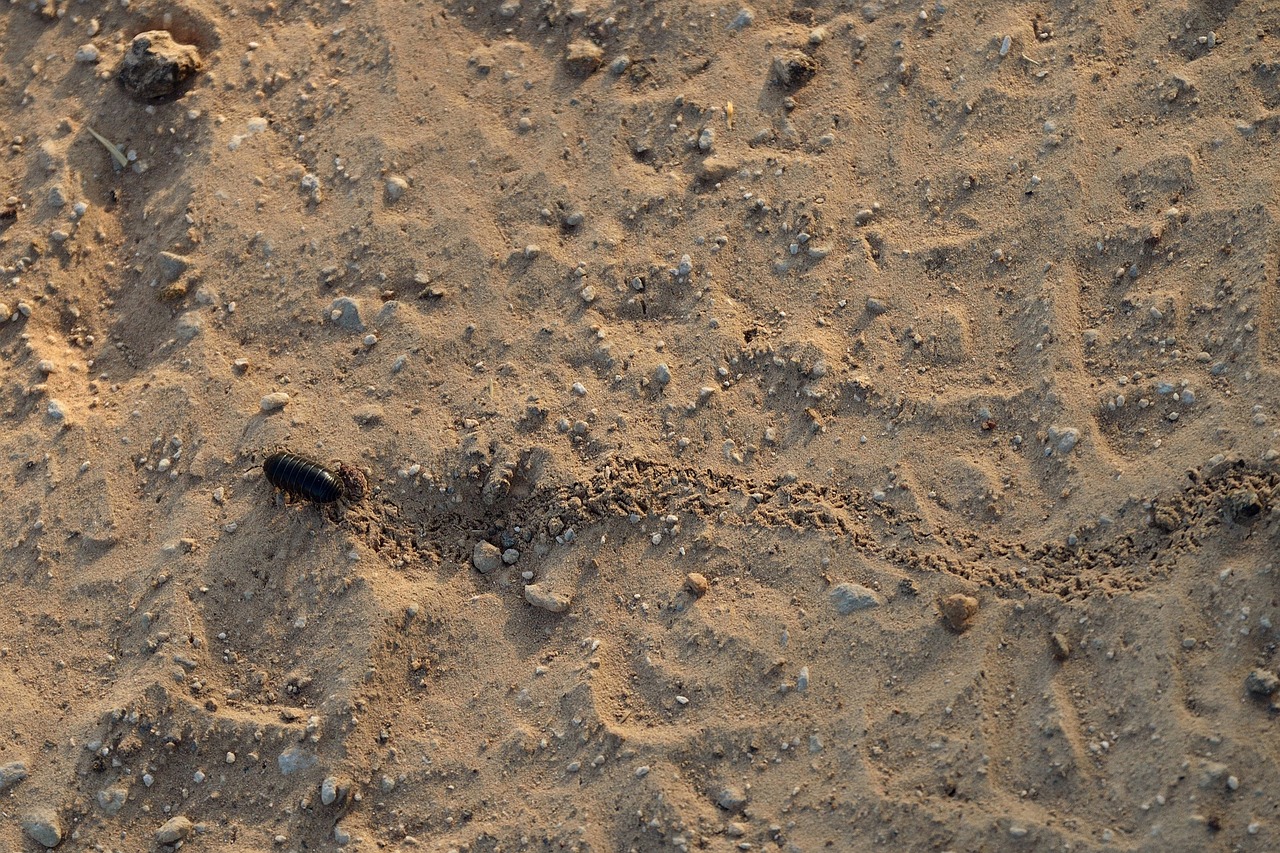
Water Management and Soil Health
When it comes to gardening, water management is not just about keeping your plants hydrated; it's a vital component that directly influences soil health and overall plant vitality. Imagine your garden as a delicate ecosystem where every drop of water counts. Too much water can lead to soggy soil, causing roots to rot, while too little can dry out the soil, making it challenging for plants to absorb necessary nutrients. Therefore, understanding the relationship between water and soil is crucial for any gardener aiming to cultivate a thriving garden.
One of the most effective methods for managing water in your garden is through drip irrigation. This technique delivers water directly to the plant roots, ensuring that moisture reaches the areas where it’s most needed. Not only does this method conserve water, but it also helps maintain optimal soil moisture levels, which is essential for healthy root development. Think of it as providing your plants with a refreshing drink right at their feet, rather than soaking the entire garden and risking waterlogging.
Additionally, incorporating mulching techniques can significantly enhance your water management efforts. Mulch acts as a protective layer on the soil surface, reducing evaporation rates and keeping the soil moist for longer periods. It also suppresses weed growth, which competes with your plants for both water and nutrients. By applying organic materials like straw, wood chips, or even grass clippings, you create a barrier that helps retain moisture while enriching the soil as it breaks down. It’s like giving your garden a cozy blanket that not only keeps it warm but also nourishes it over time.
To illustrate the benefits of effective water management, consider the following table that outlines the impact of various irrigation methods on soil health:
| Irrigation Method | Benefits | Drawbacks |
|---|---|---|
| Drip Irrigation |
|
Initial setup cost can be high |
| Sprinkler System |
|
Can lead to water runoff and evaporation |
| Hand Watering |
|
Time-consuming and labor-intensive |
In conclusion, effective water management is essential for maintaining healthy soil and promoting robust plant growth. By adopting methods like drip irrigation and mulching, you can create a harmonious balance between water and soil health. Remember, your garden is a living entity that thrives on the right conditions, and managing water effectively is a key part of nurturing that life.
Q: How often should I water my garden?
A: The frequency of watering depends on various factors such as plant type, soil composition, and weather conditions. Generally, aim for deep watering once or twice a week, allowing the top inch of soil to dry out between waterings.
Q: What is the best time to water my garden?
A: The best time to water is early in the morning or late in the afternoon. This timing helps minimize evaporation and allows plants to absorb moisture effectively.
Q: Can I overwater my plants?
A: Yes, overwatering can lead to root rot and other issues. Always check the soil moisture before watering, and ensure that your soil has good drainage.
Q: What are the signs of underwatering?
A: Signs include wilting leaves, dry soil, and stunted growth. If you notice these symptoms, it’s time to adjust your watering schedule.

Drip Irrigation Benefits
When it comes to maintaining healthy soil in your garden, drip irrigation stands out as a game-changer. Imagine providing your plants with just the right amount of water, directly at their roots, without the wastefulness of traditional watering methods. This precise technique not only conserves water but also enhances the overall health of your soil, leading to a thriving garden ecosystem.
One of the most significant benefits of drip irrigation is its ability to deliver water efficiently. Unlike conventional sprinklers that spray water indiscriminately over a wide area, drip irrigation systems utilize a network of tubing and emitters to target specific plants. This means that water is delivered directly to the root zone, where it's needed most. As a result, less water is lost to evaporation or runoff, making it an environmentally friendly choice.
Moreover, drip irrigation helps maintain optimal soil moisture levels. Healthy soil requires consistent moisture to support plant growth and microbial activity. With drip irrigation, you can easily regulate the amount of water your plants receive, ensuring they are neither overwatered nor underwatered. This balance is crucial for promoting a robust root system, which in turn leads to stronger and healthier plants.
Additionally, drip irrigation can significantly reduce the risk of soil erosion. Traditional watering methods can cause water to flow over the surface of the soil, potentially washing away valuable topsoil and nutrients. By delivering water directly to the soil, drip irrigation minimizes this risk, helping to preserve the integrity of your garden's ecosystem.
Another advantage is that drip irrigation can help suppress weed growth. Since water is applied only to the plants, the surrounding areas remain drier, making it less hospitable for weeds to thrive. This not only saves you time and effort in weeding but also reduces the need for chemical herbicides, promoting a healthier garden environment.
In summary, the benefits of drip irrigation extend far beyond just watering your plants. By conserving water, maintaining soil moisture, reducing erosion, and suppressing weeds, this method supports a healthier garden ecosystem. It's a smart investment for any gardener looking to enhance their soil health and promote sustainable gardening practices.
- What is drip irrigation? Drip irrigation is a method of watering plants that delivers water directly to the root zone through a network of tubing and emitters.
- How does drip irrigation conserve water? It minimizes evaporation and runoff by applying water directly to the soil, reducing the amount of water wasted.
- Can drip irrigation help with weed control? Yes, since water is applied only to the plants, surrounding areas remain drier, making it less conducive for weed growth.
- Is drip irrigation suitable for all types of gardens? Yes, drip irrigation can be adapted for various garden types, including vegetable gardens, flower beds, and even potted plants.
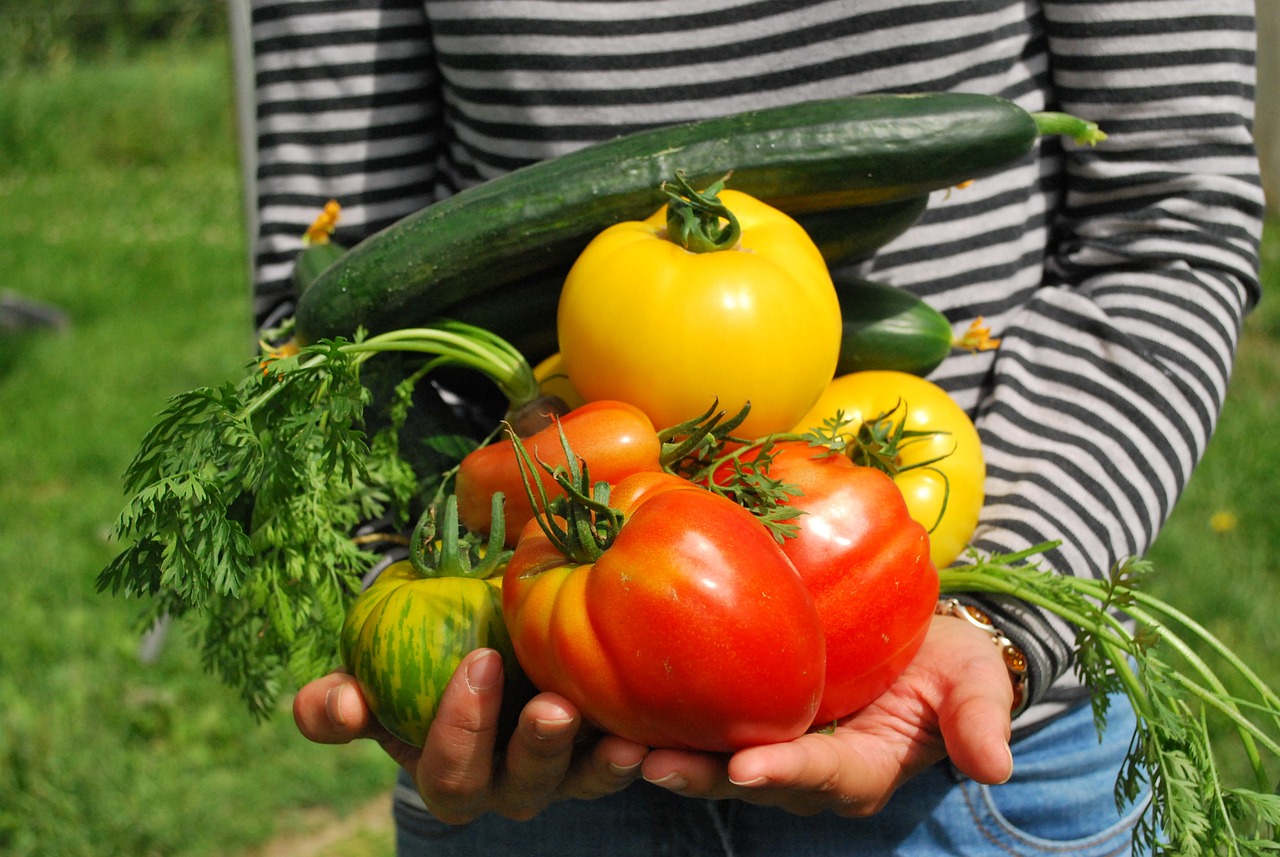
Mulching Techniques
Mulching is one of those gardening secrets that can transform your garden into a thriving paradise. Imagine a protective blanket over your soil, keeping it warm in the winter and cool in the summer. Mulching not only enhances the aesthetic appeal of your garden but also serves several practical purposes that every gardener should embrace.
First and foremost, mulching helps to retain soil moisture. When you apply a layer of mulch, it acts as a barrier, reducing evaporation from the soil surface. This means less frequent watering for you, and healthier plants that can thrive even during dry spells. Isn’t it amazing how a simple layer of organic material can save you time and effort?
Additionally, mulch works wonders in suppressing weeds. Weeds are like uninvited guests at a party; they take up space and resources that your plants desperately need. By applying a thick layer of mulch, you can effectively block sunlight from reaching weed seeds, preventing them from germinating. This not only saves you from tedious weeding but also allows your plants to grow without competition.
But that’s not all! Mulching also contributes to soil health. As organic mulch breaks down over time, it enriches the soil with nutrients, promoting a vibrant ecosystem beneath the surface. Think of it as a slow-release fertilizer that keeps on giving. Compost, straw, wood chips, and grass clippings are excellent choices for mulch, each offering unique benefits:
| Type of Mulch | Benefits |
|---|---|
| Compost | Improves soil structure and adds nutrients. |
| Straw | Lightweight, great for moisture retention and weed suppression. |
| Wood Chips | Long-lasting, helps regulate soil temperature. |
| Grass Clippings | Rich in nitrogen, ideal for vegetable gardens. |
When applying mulch, a thickness of about 2 to 4 inches is generally recommended. However, it’s essential to avoid piling mulch directly against plant stems, as this can lead to rot. Instead, create a donut shape around the plants, allowing for air circulation while still providing all the benefits of mulch.
Moreover, mulching is not just a seasonal task; it can be done year-round. In the fall, a layer of mulch can protect your plants from harsh winter conditions, while in the spring, it helps to warm the soil and promote early growth. This versatility makes mulching a must-have technique in every gardener's toolkit.
In conclusion, mulching is a simple yet effective way to enhance your garden’s health and beauty. By choosing the right type of mulch and applying it correctly, you can create a thriving ecosystem that supports your plants while reducing your workload. So, why not give your garden that little extra love it deserves?
- What is the best time to apply mulch? It's best to apply mulch in spring after the soil has warmed up and again in the fall to protect plants during winter.
- How thick should my mulch layer be? Aim for a thickness of 2 to 4 inches, but ensure it does not touch plant stems.
- Can I use any material for mulching? While many materials can be used, organic options like straw, wood chips, and compost are generally preferred for their added benefits.
- Will mulching attract pests? If applied correctly, mulch should not attract pests. However, be cautious with materials like grass clippings, which can attract certain insects if not dried properly.
Frequently Asked Questions
- What is the importance of healthy soil in gardening?
Healthy soil is the backbone of a successful garden. It provides essential nutrients, supports plant roots, and fosters biodiversity. This leads to healthier plants and a more productive garden ecosystem, allowing your plants to thrive and flourish.
- How can I improve my soil composition?
Improving soil composition involves adding organic matter like compost, which enhances soil structure and fertility. Additionally, understanding the balance of minerals and microorganisms in your soil can significantly boost plant health. Regular soil testing can help identify what your soil needs.
- What are the essential nutrients required for plants?
Plants require several key nutrients for optimal growth, including nitrogen, phosphorus, and potassium. These nutrients help in various functions such as root development, flowering, and overall plant vigor. Ensuring these nutrients are present in your soil is crucial for a thriving garden.
- How do microorganisms benefit soil health?
Microorganisms play a vital role in breaking down organic matter, which enhances nutrient availability for plants. They help create a balanced soil ecosystem, improving soil structure and fertility, ultimately leading to healthier plants.
- What is soil pH, and why is it important?
Soil pH measures the acidity or alkalinity of your soil, which affects nutrient availability and plant growth. Maintaining the right pH level is essential for optimal gardening conditions, as it influences how well plants can absorb nutrients.
- What are common soil amendments I can use?
Common soil amendments include lime, which raises pH, and sulfur, which lowers it. Organic fertilizers add nutrients back into the soil, improving its overall quality. Using these amendments can significantly enhance your soil's health and productivity.
- How does water management affect soil health?
Effective water management is crucial for maintaining healthy soil. Overwatering can lead to erosion and nutrient leaching, while underwatering can stress plants. Implementing efficient irrigation practices, like drip irrigation, conserves water and maintains soil moisture levels.
- What are the benefits of mulching?
Mulching helps retain soil moisture, suppress weeds, and regulate soil temperature. By creating a protective layer on top of the soil, mulching can significantly improve soil health and garden productivity, making it an essential practice for any gardener.



















